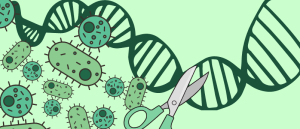CRISPR-based therapy shows promise in treating rare blindness disorder

An experimental CRISPR-Cas9 gene-editing drug has been used to improve vision in people with an inherited retinal disease.
CRISPR-Cas9 technology is revolutionizing the gene editing field, with the first CRISPR-based therapy approved by the US FDA at the end of last year. Now, a proof-of-concept Phase I/II trial led by investigators at Harvard Medical School’s Massachusetts Eye and Ear (MA, USA) has shown a CRISPR-based drug has improved vision in 79% of trial participants with a rare inherited retinal disease.
The BRILLIANCE trial assessed the safety and efficacy of EDIT-101, an experimental gene editing therapy developed by Editas Medicine (MA, USA) that utilizes CRISPR-Cas9 technology. This investigational treatment targets a mutation within the CEP290 gene that is associated with Leber congenital amaurosis (LCA) Type 10, an inherited condition that causes retinal degeneration. Most people with the mutation are either born blind or become blind within the first decade of their life, and there are currently no FDA-approved treatments for the condition.
The EDIT-101 gene-editing therapy is delivered to photoreceptors by a subretinal injection. It uses CRISPR-Cas9 to locate and remove the IVS26 mutation in the CEP209 gene, the technology working like a pair of ‘molecular scissors’ to cut out the mutation. This then restores the function of a key gene and protein that enable light-sensing cells to work properly in people with LCA.
 How can CRISPR edit out antimicrobial resistance?
How can CRISPR edit out antimicrobial resistance?
The growing threat of antimicrobial-resistant bacteria is calling upon researchers to find alternative ways to treat these infections. Cue CRISPR-Cas technology.
The first participant of the trial underwent treatment in early 2020, marking the first use of in vivo gene editing with CRISPR to edit genes directly within the human body (although later studies using this approach have since been published). Previous gene-editing methods had involved editing genetic material after it was removed from the body, and then readministering to the patient.
The trial of 12 adults and two children found that 11 individuals showed improvement in at least one of four measured outcomes, which included how well participants saw colored points of light while looking into a specialized device, navigated a research maze with physical objects and varying amounts of light, reported experiencing an improved quality of life and visual acuity. Six participants showed an improvement in two or more of the four outcomes.
“This research demonstrates that CRISPR gene therapy for inherited vision loss is worth continued pursuit in research and clinical trials,” said corresponding author Eric Pierce. “While more research is needed to determine who may benefit most, we consider the early results promising. To hear from several participants how thrilled they were that they could finally see the food on their plates — that is a big deal. These were individuals who could not read any lines on an eye chart and who had no treatment options, which is the unfortunate reality for most people with inherited retinal disorders.”